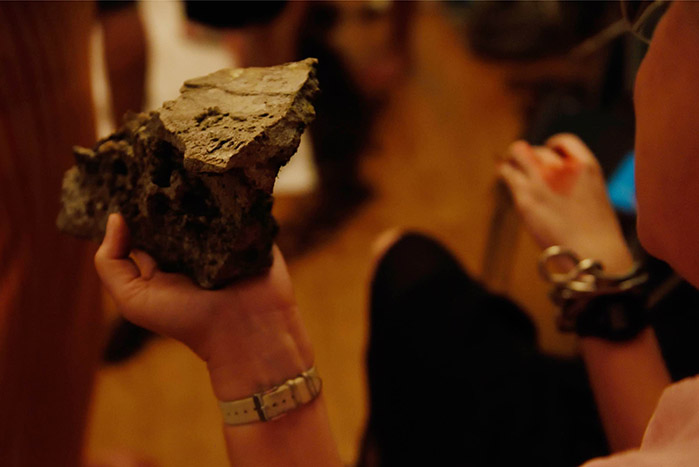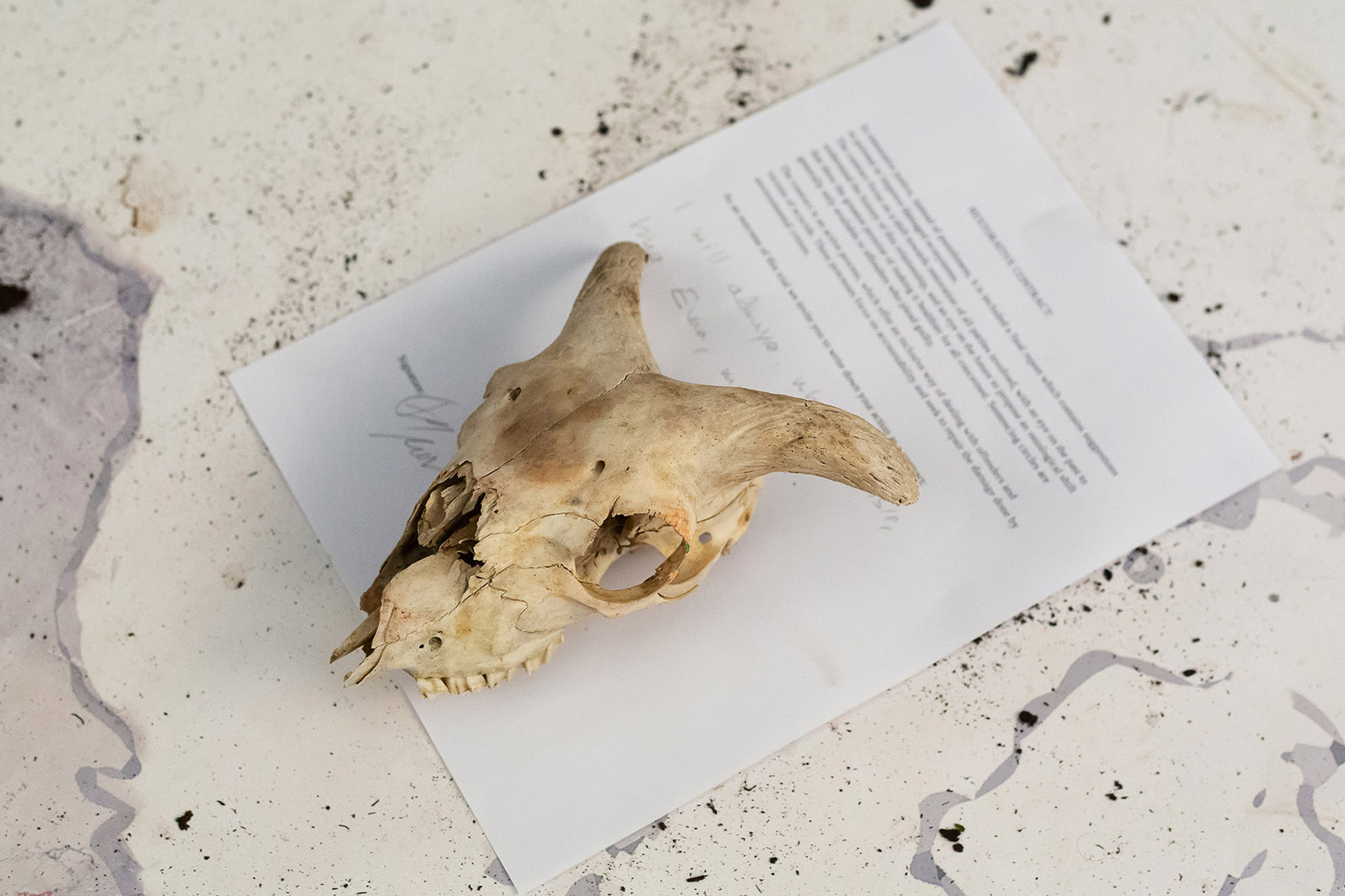Restorative Justice
“Restorative Justice is well suited to create space for ecocentric approaches to what constitutes an environmental violation, who can be a victim of such a violation, and what restoration looks like. Finally, when the offender is confronted with the harmful effect of his or her actions on the natural world in a restorative circle, this might plant seeds for ecological awakening and a change of heart.”
Restorative conference circles:
Since, victims of environmental crimes, are often forgotten, neglected and not heard, we are offering sessions between corporations and victims of environmental crimes.
The restorative conferences circles are long term commitments, up to 6 months, and it requires an agreement between perpetrators and victims of environmental and climate crimes.
A conference offers the opportunity for the offender to directly apologize to victims. It usually creates a ground for a shift of perspectives and a deeper understanding of each others perspectives and collective restoration.
The purpose of a circle is to reinforce community expectations with victimizers, maintain accountability to the community and review the progress of the healing plan.
In the case of environmental crimes we could imagine to organize a circle with all parties involved such as:
The ones in power – Ceo's and governments
The ones with agency- ngo’s, activists, doctors, toxicologists, biologists, police, economists (...)
Direct and silent victims- ancestors, future generations, human non-human communities
Guardians of non-human victims- appointed spoke persons
Accomplices -workers from the company, consumers(...)
How can restorative justice be transformative to corporations?
The legal personality of corporations creates a barrier which immunizes the human actors of the corporation from experiencing personally remorse from committing an environmental crime. Restorative justice requires the human actors of the corporation, who are likely to be the directors, executives and managers to encounter personally the victim, to listen to their needs and to make reparations to them. “The humanity of the restorative justice process pierces the corporate veil.”
If capitalistic system is somehow, corrupting the minds of corporate actors, appealing to emotions, could be a tactic to decolonize corporation extraction strategies. The need for active personal involvement of corporate actors in apologizing is a way to give an opportunity to be sincere and genuine. Which is somehow forgotten in our society. To listen to the heart.
If you would like to start a restorative process please contact us on:voiceofnaturekinstitute@gmail.com
More info on restorative justice approach to environmental crimes:
Restorative justice is a model in which the main goal is to come to an agreement between the harmed victim and the offender, in order to restore the relationship between the two parties. Different from the retributive justice system, which is based on punishing the one who has committed a crime by breaking the law, in restorative justice the focus is on the relation that needs to be restored. This process is a challenge of bringing offenders and victims for systemic socio-environmental injustice.
In environmental crimes, the process of identifying who are the victims is a bit more complex, because it covers a wholeness of species which have been harmed. The process of restoring relationships between victim and offender are challenging, especially when the offenders, are in most cases corporations which don't want to assume responsibility for the damage caused by oil spills, air pollution, toxic contaminants, mining, extraction (...) Usually apologizing is a key moment in the process, but other conditions can be established in the restorative contract too, such as restitution. Depending on what was damaged, the most common need in a restitution is restoring is to land, species, humans or monetary restitution for the victims. However in the case of ecocide, it is impossible to restore nature with a financial compensation, because all life has been destroyed. Other creative punishments include restoration or enhancement of the environment in public places, environmental audits of company activities, publication of the offense, and a requirement for notification in company annual reports.
However there isn't any form of compensation that can bring back life. Some victims of ecocide, suggest that the perpetrators, mostly CEO's as a restitution should live for a period of time, in a location where an environmental crime have happened, to be able to grief and share the sorrow of damaged landscapes.
Restorative justice recognizes punishment as a form of harm and tries to break the pattern and vicious cycle of punishing violence with more violence. In order to do that, restorative principles are based on:
- To give victims a voice; to encourage them to express their needs and enable and assist them to participate in the resolution process;
- To repair relationships damaged by crime, in part by arriving at a consensus on how best to respond to it;
- To renounce criminal behavior as unacceptable and to reaffirm community values;
- To reduce recidivism by encouraging change in individual offenders and facilitating their integration into the community;
- To identify factors that lead to crime and to inform authorities responsible for crime reduction strategies about these factors.
*This section is based on the immersive research of Femke Wijdekop, which you can delve into on Earth Restorative Justice
Who are the victims of environmental crime?
Humans are not the only victims of environmental crime, apart from its utilitarian or instrumental value for humans, ecosystems have intrinsic and reciprocal interdependence with us. The victims can be specific persons whose life, health or property is directly impacted, but they can also be members of the community who are more indirectly affected or future generations including the unborn. The silent victims are the environment and non-human: rivers, mountains, oceans, all living species, including bacteria.

Restorative contract
in restorative justice, instead of punishment, it is included in a final report which contains suggestions to prevent or improve a damaged ecosystem.
The contract focuses on a shift towards restoration of all parties involved, with an eye on the past to understand the history of this relationship, and an eye on the future to propose an ontological shift that show the greatest promise of making it healthier for all concerned. Sentencing circles are generally only available to offenders who plead guilty. So is very important to have CEOs involved in this part of the process.
The contract is a healing process through community-based processes, which offer an inclusive way of dealing with offenders and victims of crime through facilitated meetings. These processes focus on accountability and seek to repair the damage done by crime.
As an outcome of this contract, all the parties involved could be involved in community healing sessions, environmental therapy, non-violent environmental dialogue processes, health treatment, after care programs for victims/refugees, informative sessions about environmental crimes, more support and constructive guidance from environmental councils.

Restorative sentence: future generations
Ecological restoration can be understood as an attempt to make amends to humans and non-humans, to all of us. If we approach it from an anthropocentric perspective, we could directly appoint the responsible of the crimes, however duo the ambitious demand of making a company accountable for the destruction and degradation of the ecosystems., most of the time the restoration happens by the hands of the affected community
Environmental harm may require remediation over generations and hence the burden and the cost of remediation is transferred to future generations. Remediation of contaminated land and restoration of human and non-human habitats are examples of intergenerational burdens passed from the present generation to future generations.
Restoration also means to prevent, control or mitigate harm to the ecosystem to prevent the continuation or reoccurrence of environmental crimes.
Important guidelines for compensation:
- pay the costs and expenses of a public authority or person incurred in connection with preventing, controlling, abating or mitigating environmental harm or making good environmental damage, or preventing or mitigating loss or damage to property, or paying compensation for loss or damage caused to property
- carry out a project for the restoration or enhancement of the environment in a public place or for the public benefit
pay a monetary amount to an organization for the purposes of a project for the restoration or enhancement of the environment or for general environmental purposes.
commit to work on shifting your personal mindset and cultivate a way being in that world that is based on respect, mutual co-habitation, care and presence.
Prevention methodologies on environmental crimes:
- carry out an environmental audit of activities carried on by the offender
- attend, or cause the offender’s employees or contractors to attend, a training or other course;
- establish a training course for the offender’s employees or contractors.
- The environment might be so badly damaged that it is not feasible to restore it to the condition it was in before, but regeneration strategies can include replanting of native vegetation, to use remediation techniques such as phytoremediation, mycoremediation and permaculture.
Restorative justice holistic perspectives
Recognizing both human and nonhuman victims of environmental injustice and inter-species conflict is a part of a non-anthropocentric perspective on ethics, penitence notions, amends, reconciliation and forgiveness. A holistic approach to reparative justice, means to be responsible to restore non-human communities as part of a eco-ethical relationship, inter-species and equality between present and future. The idea of holistic restoration identifies more then ecocide as a destruction of earthlings, but also includes an animistic perspective which is defined as “cosmocide” a term invented by Sony Labou, intending to point at the violence inflicted by the savagery of capitalism on bodies, spirits and landscapes, to do battle against colonialism and neocolonialism.
BIBLIOGRAPHY
Links
Earth Restorative Justice
Articles
VERRY, John, HEFFERNAN, Felicity, FISHER, Richard. Conference Paper: Restorative justice approaches in the context of environmental prosecution. Safety, crime and justice: from data to policy. Australian Institute of Criminology Conference. Canberra, Australia, June 2005.
BESTHORN, Fred. Restorative justice and environmental restoration—Twin pillars of a just global environmental policy: Hearing the voice of the victim. Journal of Social and Societal Policy 3, 2004.
ALMASSI, Ben. After exploitation & degradation: prospects for a model of environmental restorative justice. Contribution to Book Project: Restorative Justice, Citizenship, and Environment: A Dialogue Between Brazil, United States, Canada, Spain, and Italy.
White, Rob. INDIGENOUS COMMUNITIES, ENVIRONMENTAL PROTECTION AND RESTORATIVE JUSTICE.